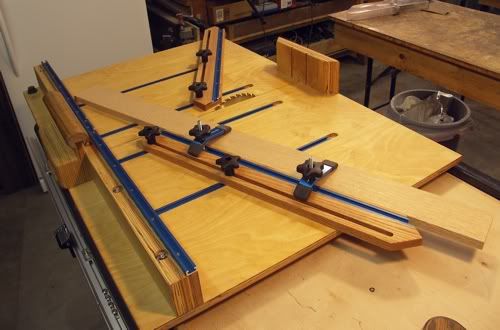Well, seeing that I have been working on my super sled for about a year, and technically it is not finished yet (no guard or hinged stop block) you might imagine that I have a few comments. I also made a panel sled. Super sled is a Nixon variant with two runners. The panel sled has one runner. So first question is, what are you planning to do with it.
Steve's sled looks heavier than mine. My super sled is 3/4" plywood, an adjustable rear fence, and a short front fence. I have been using it since soon after the basic sled was finished. My sled looks a lot like Scott Bryan's, since I copied some of his features.
Here is the link
http://lumberjocks.com/jbertelson/blog/19320
and a picture….....
Features are:
1)Reasonable weight
2)T-track for miter arms or on the fly jigs. I have used holddowns without the miter arms quite frequently.
3)Adjustable rear fence, with T-track on the top for the still to be built flip down stop. I have used the adjustment feature and I think that is the way to go.
4)Small front fence to keep the weight down
5)Miter runners are an aluminum bar/hardboard sandwich. You glue those to the board with super glue with the bars in the slots of your saw, and then add screws for durability. You make dents in the side of the bars with a punch to increase the width, and use a file to reduce width. My sled has basically no slop in it right now.
6)Travel stop on the left side that engages a stop installed on the side of the table saw. It stops before the blade can exit the bury block
I like my sled a lot, and right now, I can't think of anything I would have done differently. A T-track in the face of the back fence, or a combo track built into it would be an option.
If you decide to build one anything like mine, just give me a shout. Same goes for the panel sled, but it has much less versatility. I have detailed pictures of both, including the construction techniques.
Off to work…..........
Later,
Jim





